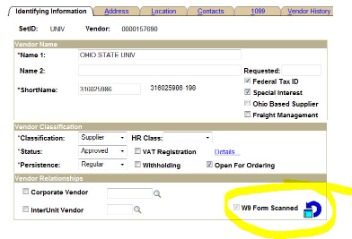Content

Here’s what the term account means in general business – as well as in the specific context of accounting. Convention, which has not changed for hundreds of years, prescribes that the left-hand side of a T-account is called the debit side, and the right-hand side is called the credit side. NerdWallet strives to keep its information accurate and up to date. This information may be different than what you see when you visit a financial institution, service provider or specific product’s site. All financial products, shopping products and services are presented without warranty. When evaluating offers, please review the financial institution’s Terms and Conditions.

This is posted to the Cash T-account on the credit side beneath the January 14 transaction. Accounts Payable has a debit of $3,500 (payment in full for the Jan. 5 purchase). You notice there is already a credit in Accounts Payable, and the new record is placed directly across from the January 5 record. Might purchase food items in one large quantity at the beginning of each month, payable by the end of the month.
What is Accounts Payable vs. Accounts Receivable?
The Asset AccountAsset Accounts are one of the categories in the General Ledger Accounts holding all the credit & debit details of a Company’s assets. The examples include Short-Term Investments, Prepaid Expenses, Supplies, Land, equipment, furniture & fixtures etc. Underneath, debits are listed on the left and credits are recorded on the right, separated by a line. The final golden rule of accounting deals with nominal accounts. A nominal account is an account that you close at the end of each accounting period.
Before you can start to put the accounting puzzle together, there is one more piece of information that you need to know. The most common form of accounting that is used today is called double-entry accounting. Double-entry accounting states that for every one transaction, two or more accounts will be affected. Now let’s look at a few examples to see how all this works. The information in the source document serves as the basis for preparing a journal entry. Then a firm posts that information to accounts in the ledger.
What is a T Account?
It categorizes transactions into primary accounts like assets, liabilities, equity, expenses and revenue. Sub-accounts can be used to categorize transactions further. You know the sum of your debits and credits must match at the end, but so far, you have a 30,000 dollars debit and a 5,000 dollars credit. You still need to record a 25,000 dollars credit to get the transaction to balance. The last piece of your transaction is to record the 25,000 dollars your business borrowed to purchase the truck.
- Notice that for this entry, the rules for recording journal entries have been followed.
- The dollar value of the debits must equal the dollar value of the credits or else the equation will go out of balance.
- This is posted to the Accounts Receivable T-account on the debit side.
- The concept of double-entry bookkeeping means that every very business transaction affects a minimum of two accounts.
- It is typically prepared at the end of an accounting period before financial statements are generated.
Noncurrent liabilities are debt obligations that will extend for longer than 12 months. Payments on big ticket items, such as machinery, land, and buildings, are good examples of noncurrent liabilities. Equity accounts are the accounts which include owner’s capital and shareholders’ equity.
Financial and Management Accounts (#
Increase is recorded on one side and decrease is recorded on the other side. Management accounts and reports are produced for internal purposes to aid management in planning, control and decision-making. Transactions are recorded in ‘books of prime entry’, also known as ‘day books’. All of these transactions must be properly recorded and analyzed.

T-accounts are visual aids to double-entry accounting, representing how one transaction affects two separate accounts. Whether you’re doing manual or electronic accounting for your small business, you should make T-accounts a habit to double-check your financial standing. Below, we’ll delve further https://quick-bookkeeping.net/ into how this accounting tool works. They are a useful tool for both newcomers to accounting and veteran accountants alike to quickly map out the correct way to record a transaction. If you remember from part 1 and part 2, we went through how every debit must have a matching credit and vice versa.
The T-account is a quick way to work out the placement of debits/credits before it’s recorded in full detail to help avoid data entry errors. Although it may lack the detail which the ledger provides, it provides the main information, which is the amount it’s being debited/credited by. Any transaction a business makes will need to be recorded in the company’s general ledger. The general ledger is divided up into individual accounts which categorise similar transaction types together. A T-Account is an accounting tool used to track debits and credits for a single account.
How do you summarize T accounts?
* A credit just means the right side. * You summarize a T-Account by adding up both sides and placing the balance of the account (the difference between the two sides) on the side with the larger total. This is called “footing” an account.
For example, purchasing new inventory for your business would increase your assets while decreasing your cash. An error in that particular accounting could mean a higher cash balance than what actually is available. The main purpose What Are T Accounts? Definition And Example of using a T-Account is to help track and manage an individual’s financial transactions. By keeping track of debits and credits, it becomes easier to monitor the flow of money going in and out of a particular account.
